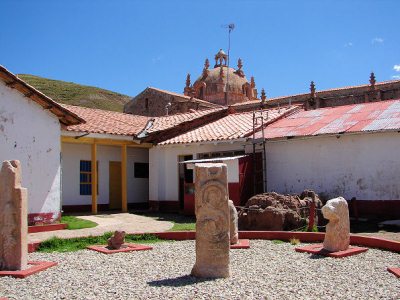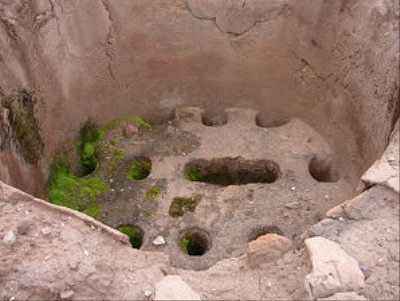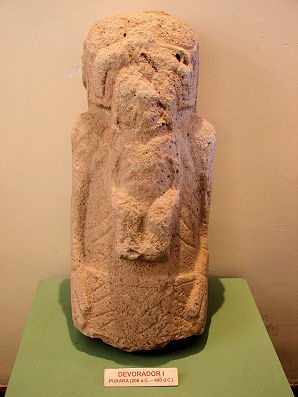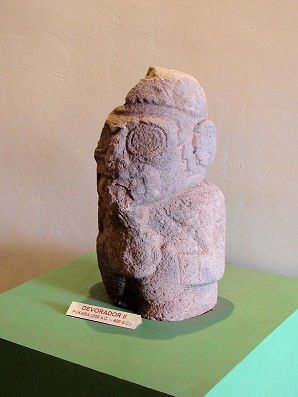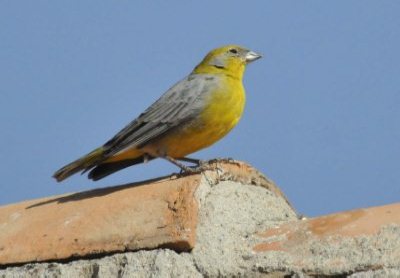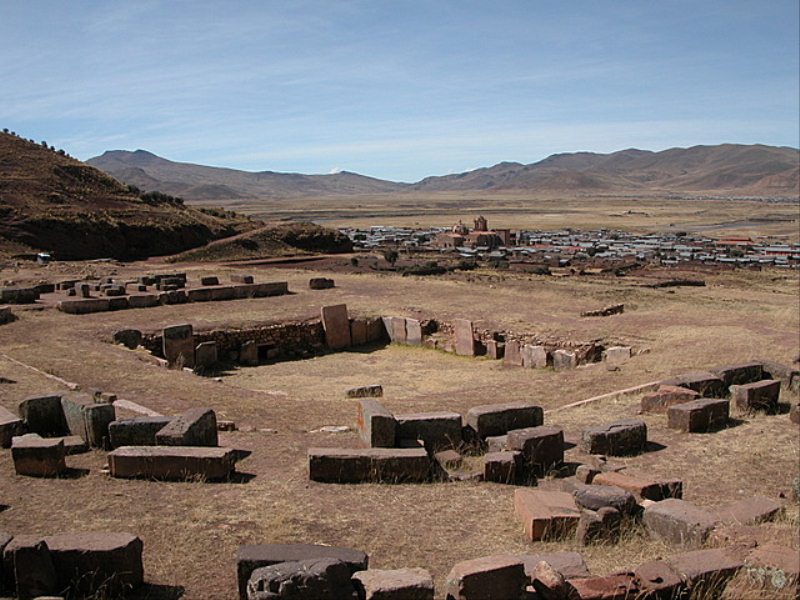|
Pucara
Pucara was our next stop, it has its origin in
the Late Formative Period (200 BC - 200 AD) on the Collao Plateau, one
of an Aymara speaking culture that flourished in the region, the predecessors of
the Thiahuanaco Civilization (200 AC - 1200 AC) that covered most of the
Bolivian and Peruvian, actual mountain and costal territories. Thiahuanaco was
the central matrix culture that exerted great influence in the development of
all the civilizations that prospered during this present era in central western
South America.
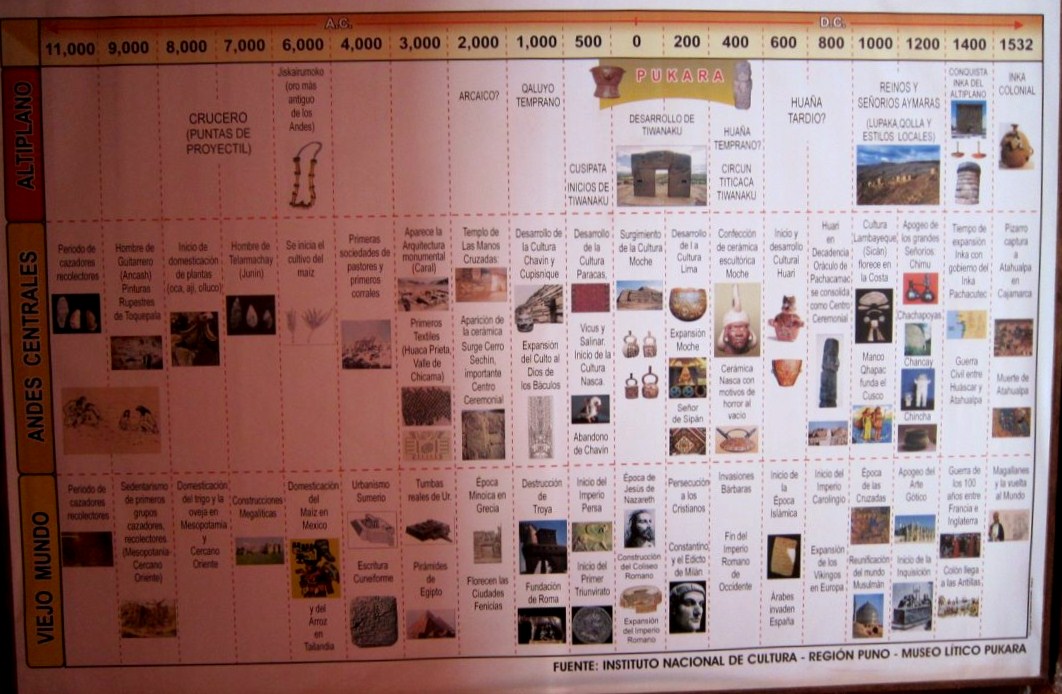
In the museum we saw a schematic
time line of ancient peoples. We were told that the Mayans practiced
human sacrifice. Pucara in the language spoken by the Incas (Quechua), is a
name that means fortress; this city was a huge fortified stronghold as well
as a ceremonial place with terraces of different sizes, made with stones
linking different levels of its pyramidal edification, Pucara was also a
commercial city famous for mineral extraction during several periods, salt,
gold and ochre from were gets its name - Puca meaning Red.
The courtyard of the museum has many
ancient monoliths to the animals they held sacred. The oven
used for pottery
 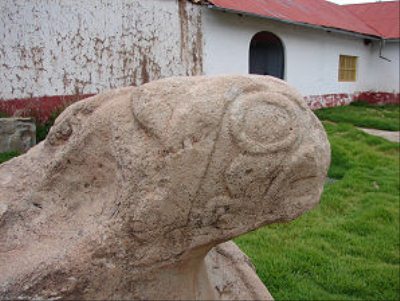
This represents the catfish found in Lake Titicaca. The Puma
turned to the Snake
It real name in Aymara is
totally ignored for the lack of textual writings; the Quechua was an imposed
language in this region by the Incas when they conquered this territories. Inca
Pachacutec after a strong resistance won these territories by the arms but it
was during the reign of his succeeding son Inca Wiracocha that a full
assimilation occurred and even the language was changed and all the construction
seen today was built during the 16th century by Incas over the ancient
structures.
The museum holds very interesting stone
sculptures, carved steles, colorful ceramics and many interesting objects with
their special style and symbolism. This is Hatan Naqak, the
great decapitator. The next one we called just "Headless"
This is Priest Devourer I and
II
Today Pucara is famous for its ceramics,
especially their artistic terracotta bulls known as “Toritos
de Pucara” they represent duality and fertility and have unique
artistic form. We have seen them on so many roofs all over Peru, now we
know where they come from. I took this picture of the roof of the museum
and a little tanager hopped in to shot. This
city is sixty seven miles, approximately two hours left on our journey to
Puno.
At Pucara there is also a sunken
plaza that has four entrances placed for the four cardinal points,
we have seen before as the Incas followed astrology closely.
At the beginning of the republican era,
the town of Pucara was the scene of the memorable harangue delivered by José
Domingo Choquehuanca, the Liberator Simom Bolivar, (our friend from
Venezuela) in their passage from Cusco to Puno,
on the 22nd of August 1825. Epic song that has gone down in history as the
"Prayer of Pucara".
ALL IN ALL AMAZING TO FIND SUCH
ANCIENT HISTORY IN A REMOTE VILLAGE
| 


